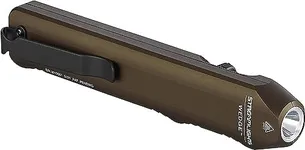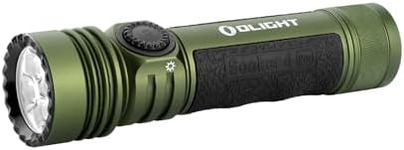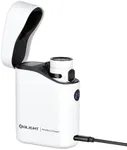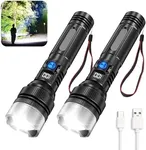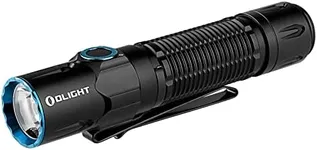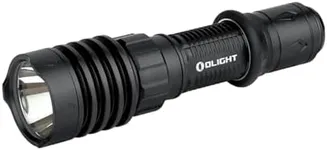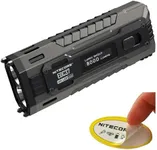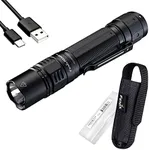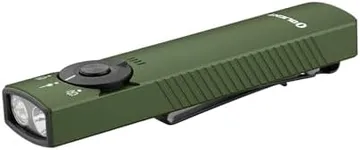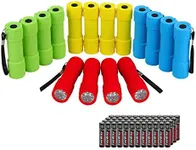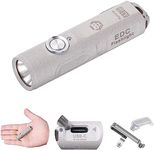Buying Guide for the Best Brightest Longest Lasting Flashlight
Choosing the right flashlight involves understanding your specific needs and the key specifications that determine its performance. Whether you need a flashlight for camping, emergency situations, or everyday use, knowing what to look for will help you make an informed decision. Here are the key specs to consider when selecting the brightest and longest-lasting flashlight for your needs.LumensLumens measure the total amount of visible light emitted by a flashlight. This spec is important because it indicates how bright the flashlight will be. Flashlights with higher lumens produce brighter light. For general use, a flashlight with 100-300 lumens is sufficient. For outdoor activities like camping or hiking, 300-1000 lumens is recommended. For professional use or search and rescue operations, look for flashlights with 1000+ lumens. Choose based on how much brightness you need for your specific activities.
Battery LifeBattery life indicates how long the flashlight can operate before the batteries need to be replaced or recharged. This is crucial for ensuring that your flashlight will last as long as you need it to. Battery life can vary widely depending on the flashlight's brightness setting. Flashlights with longer battery life are ideal for extended use, such as during camping trips or power outages. Consider how long you typically need the flashlight to last and choose one with a battery life that meets those needs.
Beam DistanceBeam distance measures how far the light can reach. This is important for seeing objects at a distance, especially in outdoor or search and rescue scenarios. Flashlights with a beam distance of 100-200 meters are suitable for general use. For outdoor activities, a beam distance of 200-500 meters is recommended. For professional use, look for flashlights with a beam distance of 500+ meters. Choose based on how far you need to see in your specific situation.
Battery TypeThe type of battery a flashlight uses can affect its performance and convenience. Common battery types include disposable (like AA or AAA) and rechargeable (like lithium-ion). Disposable batteries are easy to replace and widely available, making them convenient for occasional use. Rechargeable batteries are more cost-effective and environmentally friendly for frequent use. Consider how often you will use the flashlight and whether you prefer the convenience of disposable batteries or the long-term savings of rechargeable ones.
DurabilityDurability refers to how well the flashlight can withstand rough handling, water, and other environmental factors. This is important for ensuring the flashlight will last in various conditions. Look for flashlights with a high IP rating (e.g., IPX7 or IPX8) for water resistance and those made from durable materials like aluminum or stainless steel. Choose a flashlight that matches the level of durability you need based on your intended use, whether it's for everyday carry, outdoor adventures, or professional work.
Size and WeightThe size and weight of a flashlight can affect its portability and ease of use. Smaller, lighter flashlights are easier to carry and handle, making them ideal for everyday carry or travel. Larger, heavier flashlights may offer more power and longer battery life, making them suitable for extended use or professional applications. Consider how you plan to carry and use the flashlight and choose one that balances size, weight, and performance to meet your needs.
Modes and FeaturesMany flashlights come with multiple modes (e.g., high, medium, low, strobe) and additional features (e.g., SOS signal, zoomable focus). These can enhance the flashlight's versatility and usefulness in different situations. For general use, a flashlight with basic modes (high, medium, low) is sufficient. For outdoor or emergency use, additional modes like strobe or SOS can be beneficial. Consider what features are important for your specific needs and choose a flashlight that offers the right combination of modes and features.
